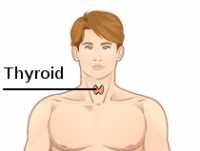Benefits of Treating Mild Hypertension Not Clear Cut
It is possible that some patients may suffer more harm than good, so doctors should be cautious when considering treatment...
It is possible that some patients may suffer more harm than good, so doctors should be cautious when considering treatment...
 Dr. John A. Staples, MD
Clinical Assistant Professor
University of British Columbia
MedicalResearch.com: What is the background for this study? What are the main findings?
Response: At this time last year, my co-author Candace Yip and I noticed an impressive number of advertisements for Halloween-themed parties at bars taped to lamp-posts. We wondered if the combination of dark costumes, dark evenings, alcohol and trick-or-treaters made the streets more dangerous for pedestrians.
To see if our hunch was correct, we examined 42 years of data on all fatal vehicle crashes in the United States between 1975 and 2016. We compared the number of pedestrian fatalities between 5 p.m. and midnight on Halloween with the number during the same hours on control days one week earlier and one week later. We found that 14 pedestrian deaths occurred on the average Halloween, while only 10 pedestrian deaths occurred on the average control evening. This corresponded to a 43% increase in the relative risk of pedestrian fatality on Halloween.
Among children aged 4 to 8 years of age, the risk of death was ten times higher on Halloween evening compared to control evenings. Risks were highest around 6pm, which is prime trick-or-treating time. Absolute risks were small and declined throughout the four decades of the study, but the relative risk increase on Halloween persisted throughout the entire study interval. (more…)
Dr. John A. Staples, MD
Clinical Assistant Professor
University of British Columbia
MedicalResearch.com: What is the background for this study? What are the main findings?
Response: At this time last year, my co-author Candace Yip and I noticed an impressive number of advertisements for Halloween-themed parties at bars taped to lamp-posts. We wondered if the combination of dark costumes, dark evenings, alcohol and trick-or-treaters made the streets more dangerous for pedestrians.
To see if our hunch was correct, we examined 42 years of data on all fatal vehicle crashes in the United States between 1975 and 2016. We compared the number of pedestrian fatalities between 5 p.m. and midnight on Halloween with the number during the same hours on control days one week earlier and one week later. We found that 14 pedestrian deaths occurred on the average Halloween, while only 10 pedestrian deaths occurred on the average control evening. This corresponded to a 43% increase in the relative risk of pedestrian fatality on Halloween.
Among children aged 4 to 8 years of age, the risk of death was ten times higher on Halloween evening compared to control evenings. Risks were highest around 6pm, which is prime trick-or-treating time. Absolute risks were small and declined throughout the four decades of the study, but the relative risk increase on Halloween persisted throughout the entire study interval. (more…) Faiz Gani, PhD
Postdoctoral research fellow
Department of Surgery
Johns Hopkins University School of Medicine
MedicalResearch.com: What is the background for this study? What are the main findings?
Response: Firearm related injuries are a leading cause of injury and death in the United States, yet, due to combination of factors, limited data exist that evaluate these injuries, particularly among younger patients (patients younger than 18 years).
The objective of this study was to describe emergency department utilization for firearm related injuries and to quantitate the financial burden associated with these injuries.
In our study of over 75,000 emergency department visits, we observed that each year, over 8,300 children and adolescents present to the emergency department for the treatment / management of a gunshot injury. Within this sub-population of patients, we observed that these injuries are most frequent among patients aged 15-17 years and while these injuries decreased over time initially, were observed to increase again towards the end of the time period studied.
In addition to describing the clinical burden of these injuries, we also sought to describe the financial burden associated with these injuries. For patients discharged from the emergency department, the average (median) charge associated with their care was $2,445, while for patients admitted as inpatients for further care, the average (median) charge was $44,966.
Collectively these injuries resulted in $2.5 billion in emergency department and hospital charges over the time period studied. This translates to an annual financial burden of approximately $270 million. (more…)
Faiz Gani, PhD
Postdoctoral research fellow
Department of Surgery
Johns Hopkins University School of Medicine
MedicalResearch.com: What is the background for this study? What are the main findings?
Response: Firearm related injuries are a leading cause of injury and death in the United States, yet, due to combination of factors, limited data exist that evaluate these injuries, particularly among younger patients (patients younger than 18 years).
The objective of this study was to describe emergency department utilization for firearm related injuries and to quantitate the financial burden associated with these injuries.
In our study of over 75,000 emergency department visits, we observed that each year, over 8,300 children and adolescents present to the emergency department for the treatment / management of a gunshot injury. Within this sub-population of patients, we observed that these injuries are most frequent among patients aged 15-17 years and while these injuries decreased over time initially, were observed to increase again towards the end of the time period studied.
In addition to describing the clinical burden of these injuries, we also sought to describe the financial burden associated with these injuries. For patients discharged from the emergency department, the average (median) charge associated with their care was $2,445, while for patients admitted as inpatients for further care, the average (median) charge was $44,966.
Collectively these injuries resulted in $2.5 billion in emergency department and hospital charges over the time period studied. This translates to an annual financial burden of approximately $270 million. (more…) Dr Sharon Leitch | MBChB, DCH, PGDipGP, FRNZCGP
General Practitioner, Clinical Research Training Fellow
Department of General Practice and Rural Health
University of Otago
New Zealand
MedicalResearch.com: What is the background for this study?
Response: Loneliness is associated with poor health, reduced quality of life, and increased mortality. Loneliness typically worsens with age. We were curious to learn what the prevalence of loneliness was among older New Zealanders, if there were age-specific associations with loneliness, whether there were any associations between demographic and psychosocial variables and loneliness, and we also wanted to compare centenarians (100 years or older) with elderly people (aged 65-99 years). Centenarians are a particularly interesting group to study because they are a model of successful ageing.
The international Resident Assessment Instrument-Home Care (interRAI-HC) assessment has been mandatory in New Zealand for anyone undergoing assessment for publically funded support services or residential care since 2012, providing us with a comprehensive data set. We conducted a retrospective, observational, cross-sectional review of the interRAI-HC data from over 70,000 people living in the community who had their first assessment during the study period (January 2013-November 2017). We analysed eight items from the interRAI-HC data set to describe the population and evaluate the core psychosocial components of aging; age, gender, ethnicity, marital status, living arrangements, family support, depression and loneliness.
(more…)
Dr Sharon Leitch | MBChB, DCH, PGDipGP, FRNZCGP
General Practitioner, Clinical Research Training Fellow
Department of General Practice and Rural Health
University of Otago
New Zealand
MedicalResearch.com: What is the background for this study?
Response: Loneliness is associated with poor health, reduced quality of life, and increased mortality. Loneliness typically worsens with age. We were curious to learn what the prevalence of loneliness was among older New Zealanders, if there were age-specific associations with loneliness, whether there were any associations between demographic and psychosocial variables and loneliness, and we also wanted to compare centenarians (100 years or older) with elderly people (aged 65-99 years). Centenarians are a particularly interesting group to study because they are a model of successful ageing.
The international Resident Assessment Instrument-Home Care (interRAI-HC) assessment has been mandatory in New Zealand for anyone undergoing assessment for publically funded support services or residential care since 2012, providing us with a comprehensive data set. We conducted a retrospective, observational, cross-sectional review of the interRAI-HC data from over 70,000 people living in the community who had their first assessment during the study period (January 2013-November 2017). We analysed eight items from the interRAI-HC data set to describe the population and evaluate the core psychosocial components of aging; age, gender, ethnicity, marital status, living arrangements, family support, depression and loneliness.
(more…)Maintaining a high functional aerobic class appears to be associated with low mortality in all age groups. ...
 Dr. Daniel J. Livorsi, MD
Assistant Professor
INFECTIOUS DISEASE SPECIALIST
University of Iowa
MedicalResearch.com: What is the background for this study? What are the main findings?
Response: One of the Joint Commission’s standards is that hospitals audit and provide feedback on hand hygiene compliance among healthcare workers. Audit-and-feedback is therefore commonly practiced in US hospitals, but the effective design and delivery of this intervention is poorly defined, particularly in relation to hand hygiene improvement.
We studied how 8 hospitals had implemented audit-and-feedback for hand hygiene improvement. We found that hospitals were encountering several barriers in their implementation of audit-and-feedback. Audit data on hand hygiene compliance was challenging to collect and was frequently questioned. The feedback of audit results did not motivate positive change.
(more…)
Dr. Daniel J. Livorsi, MD
Assistant Professor
INFECTIOUS DISEASE SPECIALIST
University of Iowa
MedicalResearch.com: What is the background for this study? What are the main findings?
Response: One of the Joint Commission’s standards is that hospitals audit and provide feedback on hand hygiene compliance among healthcare workers. Audit-and-feedback is therefore commonly practiced in US hospitals, but the effective design and delivery of this intervention is poorly defined, particularly in relation to hand hygiene improvement.
We studied how 8 hospitals had implemented audit-and-feedback for hand hygiene improvement. We found that hospitals were encountering several barriers in their implementation of audit-and-feedback. Audit data on hand hygiene compliance was challenging to collect and was frequently questioned. The feedback of audit results did not motivate positive change.
(more…) Elani Streja MPH PhD
Division of Nephrology and Hypertension
University of California, Irvine | UCI ·
Elvira O. Gosmanova, MD, FASN
Medicine/Nephrology
Albany Stratton VA Medical Center
Csaba P Kovesdy MD
Fred Hatch Professor of Medicine
Division of Nephrology, University of Tennessee Health Science Center
Nephrology Section Chief, Memphis VA Medical Center
Director, Clinical Outcomes and Clinical Trials Program
Memphis TN, 38163
MedicalResearch.com: What is the background for this study? What are the main findings?
Response: Cardiovascular disease (CVD) is one of the leading causes of mortality and morbidity in patients with chronic kidney disease (CKD).
Statins are lipid-lowering drugs that have a proven track record in reducing risk of CVD in patients with advanced CKD who did not yet reach its terminal stage or end-stage renal disease (ESRD). Paradoxically, new prescription of statins after ESRD onset failed to reduce CVD related outcomes in three large clinical trials. However, benefits of statin continuation at transition from advanced CKD to ESRD was never formally tested.
Therefore, we identified a cohort of 14,298 US Veterans who used statins for at least half of the year during 1 year before ESRD transition and evaluated mortality outcomes based on whether statins were continued or stopped after ESRD onset.
We found that ESRD patients who continue statins for at least 6 months after transition had 28% and 18% lower risk of death from any cause or cardiovascular causes, respectively, during 12-months of follow up, as compared with statin discontinuers. (more…)
Elani Streja MPH PhD
Division of Nephrology and Hypertension
University of California, Irvine | UCI ·
Elvira O. Gosmanova, MD, FASN
Medicine/Nephrology
Albany Stratton VA Medical Center
Csaba P Kovesdy MD
Fred Hatch Professor of Medicine
Division of Nephrology, University of Tennessee Health Science Center
Nephrology Section Chief, Memphis VA Medical Center
Director, Clinical Outcomes and Clinical Trials Program
Memphis TN, 38163
MedicalResearch.com: What is the background for this study? What are the main findings?
Response: Cardiovascular disease (CVD) is one of the leading causes of mortality and morbidity in patients with chronic kidney disease (CKD).
Statins are lipid-lowering drugs that have a proven track record in reducing risk of CVD in patients with advanced CKD who did not yet reach its terminal stage or end-stage renal disease (ESRD). Paradoxically, new prescription of statins after ESRD onset failed to reduce CVD related outcomes in three large clinical trials. However, benefits of statin continuation at transition from advanced CKD to ESRD was never formally tested.
Therefore, we identified a cohort of 14,298 US Veterans who used statins for at least half of the year during 1 year before ESRD transition and evaluated mortality outcomes based on whether statins were continued or stopped after ESRD onset.
We found that ESRD patients who continue statins for at least 6 months after transition had 28% and 18% lower risk of death from any cause or cardiovascular causes, respectively, during 12-months of follow up, as compared with statin discontinuers. (more…)The results demonstrate both the potential and the challenges of using AI systems to identify diabetic retinopathy in clinical practice....
The fact that men are also significantly affected emphasizes that this is not a women´s issue but a phenomenon that...
 Dr. med. Martin Feller, MSc Epidemiology (LSHTM)
FMH Allgemeine Innere Medizin & Prävention und Gesundheitswesen
Scientific Research Coordinator
INSELSPITAL, Universitätsspital Bern
Universitätsklinik und Poliklinik für Allgemeine Innere Medizin (RodondiResearch)
MedicalResearch.com: What is the background for this study? What are the main findings?
Response: SUBCLINICAL HYPOTHYROIDISM IS VERY COMMON, WITH AN ESTIMATED 13 MILLION AMERICANS AFFECTED. SUBCLINICAL HYPOTHYROIDISM IS OFTEN TREATED WITH LEVOTHYROXINE, PARTICULARLY WHEN IT CO-OCCURS WITH SYMPTOMS POTENTIALLY ATTRIBUTABLE TO HYPOTHYROIDISM SUCH AS TIREDNESS, CONSTIPATION, AND UNEXPLAINED WEIGHT GAIN. THIS PRACTICE MAY CONTRIBUTE TO LEVOTHYROXINE BEING THE MOST PRESCRIBED DRUG FROM 2014 ONWARDS IN THE US.
HOWEVER, IN OUR META-ANALYSIS OF 21 RANDOMIZED CLINICAL TRIALS, WE OBSERVED NO BENEFIT OF LEVOTHYROXINE THERAPY (COMPARED TO PLACEBO) REGARDING GENERAL QUALITY OF LIFE, THYROID-RELATED SYMPTOMS, DEPPRESSIVE SYMPTOMS, FATIGUE, COGNITIVE FUNCTION, BLOOD PRESSURE OR BODY-MASS INDEX. (more…)
Dr. med. Martin Feller, MSc Epidemiology (LSHTM)
FMH Allgemeine Innere Medizin & Prävention und Gesundheitswesen
Scientific Research Coordinator
INSELSPITAL, Universitätsspital Bern
Universitätsklinik und Poliklinik für Allgemeine Innere Medizin (RodondiResearch)
MedicalResearch.com: What is the background for this study? What are the main findings?
Response: SUBCLINICAL HYPOTHYROIDISM IS VERY COMMON, WITH AN ESTIMATED 13 MILLION AMERICANS AFFECTED. SUBCLINICAL HYPOTHYROIDISM IS OFTEN TREATED WITH LEVOTHYROXINE, PARTICULARLY WHEN IT CO-OCCURS WITH SYMPTOMS POTENTIALLY ATTRIBUTABLE TO HYPOTHYROIDISM SUCH AS TIREDNESS, CONSTIPATION, AND UNEXPLAINED WEIGHT GAIN. THIS PRACTICE MAY CONTRIBUTE TO LEVOTHYROXINE BEING THE MOST PRESCRIBED DRUG FROM 2014 ONWARDS IN THE US.
HOWEVER, IN OUR META-ANALYSIS OF 21 RANDOMIZED CLINICAL TRIALS, WE OBSERVED NO BENEFIT OF LEVOTHYROXINE THERAPY (COMPARED TO PLACEBO) REGARDING GENERAL QUALITY OF LIFE, THYROID-RELATED SYMPTOMS, DEPPRESSIVE SYMPTOMS, FATIGUE, COGNITIVE FUNCTION, BLOOD PRESSURE OR BODY-MASS INDEX. (more…) Professor Yair Lotan MD
Chief of Urologic Oncology
Holder of the Helen J. and Robert S. Strauss Professorship in Urology
UT Southwestern Medical Center at Dallas
Department of Urology
Dallas, Texas 75390-9110
MedicalResearch.com: What is the background for this study? What are the main findings?
Response: Urinary tract infections are extremely common in women and many women experience recurrent episodes which impact their quality of life. There are also many women who do not drink as much water as is recommended.
This study found that in healthy women with recurrent UTIs who drink less than 1.5 liters per day, the additional intake of 1.5 liters of water daily reduced the risk of recurrent infections by nearly 50%. (more…)
Professor Yair Lotan MD
Chief of Urologic Oncology
Holder of the Helen J. and Robert S. Strauss Professorship in Urology
UT Southwestern Medical Center at Dallas
Department of Urology
Dallas, Texas 75390-9110
MedicalResearch.com: What is the background for this study? What are the main findings?
Response: Urinary tract infections are extremely common in women and many women experience recurrent episodes which impact their quality of life. There are also many women who do not drink as much water as is recommended.
This study found that in healthy women with recurrent UTIs who drink less than 1.5 liters per day, the additional intake of 1.5 liters of water daily reduced the risk of recurrent infections by nearly 50%. (more…)MedicalResearch.com Interview with: [caption id="attachment_44776" align="alignleft" width="200"] Dr. McCoy[/caption] Thomas McCoy, M.D. Assistant Professor of Psychiatry Massachusetts General Hospital Psychiatry Massachusetts General Hospital MedicalResearch.com: What is the...
 Fudi Wang, M.D., Ph.D.
Qiushi Chair Professor
Nutrition Discovery Innovation Center
School of Public Health/School of Medicine
Zhejiang University
Hangzhou China
MedicalResearch.com: What is the background for this study? What are the main findings?
Response: Parkinson disease (PD) is the second most common neurodegenerative disease affecting approximately 10 million people around the world. To date, the cause of PD remains poorly understood. It is reported that 90% PD cases have no identifiable genetic cause. What’s worse, few therapeutic advances for the treatment of PD have been made in the past decades. Nevertheless, growing prospective longitudinal studies shed lights on the potential beneficial effect of lifestyle factors on reducing the risk of developing Parkinson disease. In this study, we performed a a dose-response meta-analysis of more than half a million participants.
We found that physical activity, particularly moderate to vigorous physical activity, could significantly reduce PD risk.
(more…)
Fudi Wang, M.D., Ph.D.
Qiushi Chair Professor
Nutrition Discovery Innovation Center
School of Public Health/School of Medicine
Zhejiang University
Hangzhou China
MedicalResearch.com: What is the background for this study? What are the main findings?
Response: Parkinson disease (PD) is the second most common neurodegenerative disease affecting approximately 10 million people around the world. To date, the cause of PD remains poorly understood. It is reported that 90% PD cases have no identifiable genetic cause. What’s worse, few therapeutic advances for the treatment of PD have been made in the past decades. Nevertheless, growing prospective longitudinal studies shed lights on the potential beneficial effect of lifestyle factors on reducing the risk of developing Parkinson disease. In this study, we performed a a dose-response meta-analysis of more than half a million participants.
We found that physical activity, particularly moderate to vigorous physical activity, could significantly reduce PD risk.
(more…)